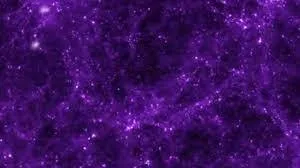A Universal Breakthrough: Iranian Scientists Come Up with Idea about Dark Energy

Ebrahim Yousefi Ramneti, a faculty member of the Islamic Azad University, Ayatollah Amoli branch, said the idea of dark energy came to his mind in 1999 while seeing boiling milk creating bubbles.
It should be mentioned that the content of the Universe is widely thought to consist of three types of substance: normal matter, dark matter, and dark energy.
Currently, 70 percent of the cosmos is thought to be dark energy, 25 percent dark matter, and 5 percent normal matter.
Normal matter consists of the atoms that make up stars, planets, human beings, and every other visible object in the Universe.
The more astronomers observed the Universe, the more matter they needed to find to explain it all. This matter could not be made of normal atoms, however, otherwise, there would be more stars and galaxies to be seen. Instead, they coined the term ‘dark matter’ for this peculiar substance precisely because it escapes our detection.
Dark energy is the latest addition to the contents of the Universe. In the 1990s observations of exploding stars in the distant Universe suggested that the Universe was not just expanding but accelerating as well. The only way to explain this was to introduce ‘dark energy'. No one knows what the dark energy might be.
“In 2010, I published my first educational-analogous article entitled “Visualizing Cosmological Concepts Using the Analog of a Hot Liquid” for the American Astronomical Society,” Yousefi Ramneti said.
“We used the expansion process of hot milk, which has similarities with the cosmic expansion, to facilitate easier and better visualization and teaching of cosmological concepts,” he further said.
The idea was published for the first time in January 2022 in the Oxford Journal of Royal Astronomical Society under the title “Surface tension of cosmic voids as a possible source for dark energy.”
The article suggests that by looking at voids as bubbles, we define the concept of surface tension which is shown to have an almost constant value for supervoids that are enclosed by superclusters.
Paul M. Sutter, a research professor in astrophysics at SUNY Stony Brook University and the Flatiron Institute in New York City, who regularly appears on TV and podcasts, including "Ask a Spaceman, released the article on August 12, 2022, for the first time.
After that, scientific media all around the world have paid special attention to the issue so more than 100 websites have so far published scientific articles related to the idea.
4155/g





















